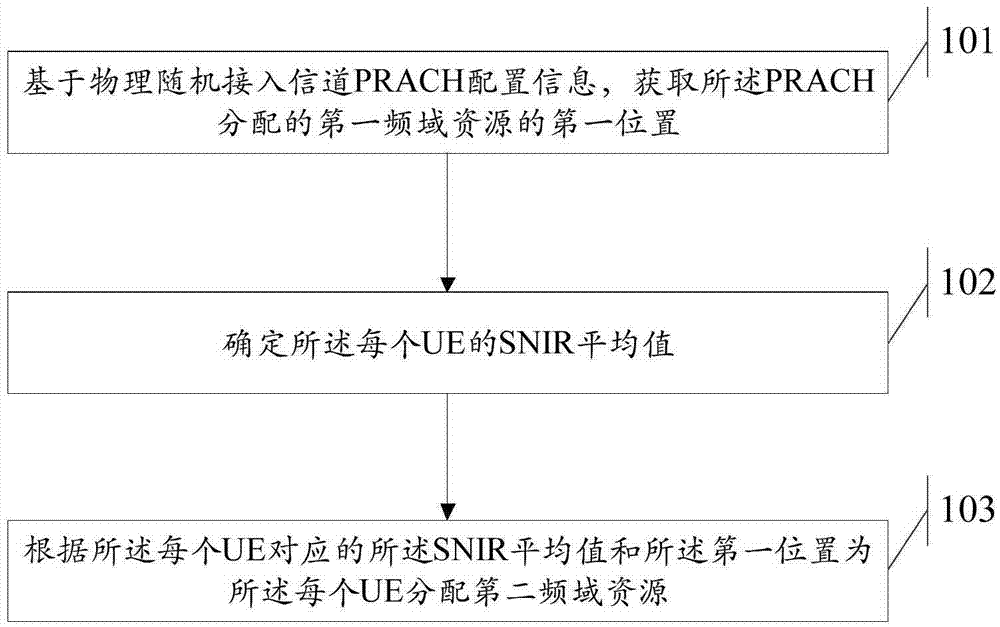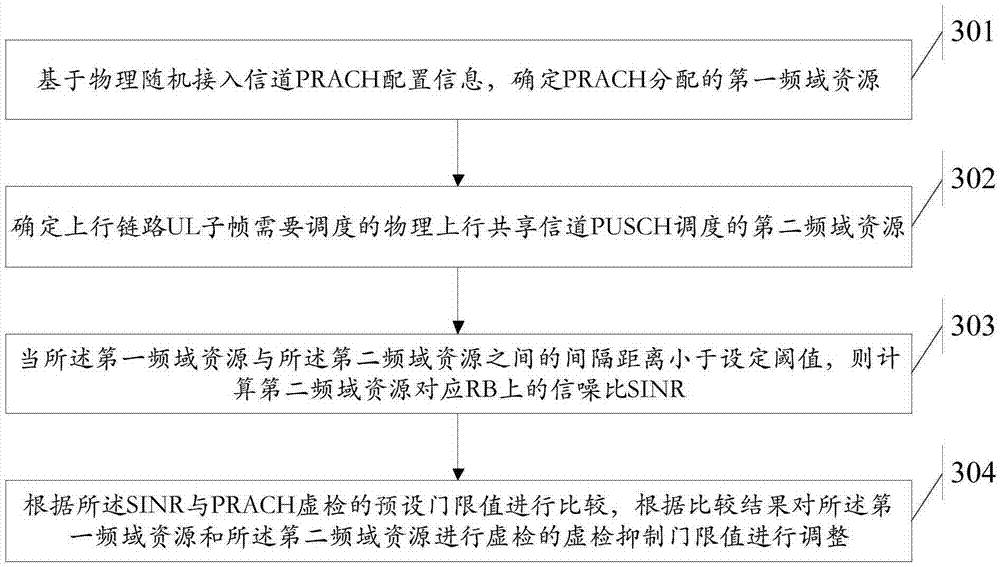Method and device for suppressing false detection of random access channel
A technology of random access channel and physical random access, applied in the field of communication, can solve the problem of high probability of false detection of PRACH channel, and achieve the effect of reducing the probability of false detection of PRACH
- Summary
- Abstract
- Description
- Claims
- Application Information
AI Technical Summary
Problems solved by technology
Method used
Image
Examples
Embodiment 1
[0050] like figure 1 As shown, the embodiment of the present invention provides a random access channel suppression false detection method, the method includes:
[0051] Step 101, based on the physical random access channel PRACH configuration information, obtain the first position of the first frequency domain resource allocated by the PRACH;
[0052] Step 102, determine the physical uplink shared channel PUSCH service scheduling information that needs to be scheduled in the uplink UL subframe at the next moment, and judge the historical information of scheduling the PUSCH service for each terminal UE within the set time period before the current time according to the service scheduling information noise ratio SINR information, determining the average SINR of each UE according to the SINR information;
[0053] Step 103, allocate a second frequency domain resource for each UE according to the average SINR corresponding to each UE and the first position; wherein, when the aver...
Embodiment 2
[0067] like figure 2 As shown, a method for suppressing false detection of a random access channel according to an embodiment of the present invention will be further described below in conjunction with specific examples. In this embodiment, multiple UEs are scheduled, and UEs are evenly distributed at far and near midpoints. The specific implementation may be:
[0068] Step 201, obtaining the configuration information of PRACH and the scheduling information of the PUSCH service that needs to be scheduled in the uplink UL subframe at the next moment;
[0069] Step 202, obtaining the historical SINR record of the UE corresponding to the PUSCH service;
[0070] Step 203, according to the history SINR record that obtains, judge one by one whether the RB level average SINR of the UE that dispatches PUSCH service is greater than false detection SINR minimum threshold, if yes then transfer to step 204; otherwise transfer to step 205;
[0071] Step 204, scheduling the UE whose SINR...
Embodiment 3
[0077] like image 3 As shown, the embodiment of the present invention also provides another random access channel suppression false detection method, the method includes
[0078] Step 301, based on the physical random access channel PRACH configuration information, determine the first frequency domain resources allocated by the PRACH;
[0079] Step 302, determining the second frequency domain resource scheduled by the physical uplink shared channel PUSCH that needs to be scheduled in the uplink UL subframe;
[0080] Step 303, when the separation distance between the first frequency domain resource and the second frequency domain resource is less than a set threshold, calculate the signal-to-noise ratio SINR on the RB corresponding to the second frequency domain resource;
[0081] Step 304: Comparing the SINR with the preset threshold value of the PRACH false detection, and performing a false detection suppression threshold for the false detection of the first frequency domai...
PUM
 Login to View More
Login to View More Abstract
Description
Claims
Application Information
 Login to View More
Login to View More - R&D
- Intellectual Property
- Life Sciences
- Materials
- Tech Scout
- Unparalleled Data Quality
- Higher Quality Content
- 60% Fewer Hallucinations
Browse by: Latest US Patents, China's latest patents, Technical Efficacy Thesaurus, Application Domain, Technology Topic, Popular Technical Reports.
© 2025 PatSnap. All rights reserved.Legal|Privacy policy|Modern Slavery Act Transparency Statement|Sitemap|About US| Contact US: help@patsnap.com



